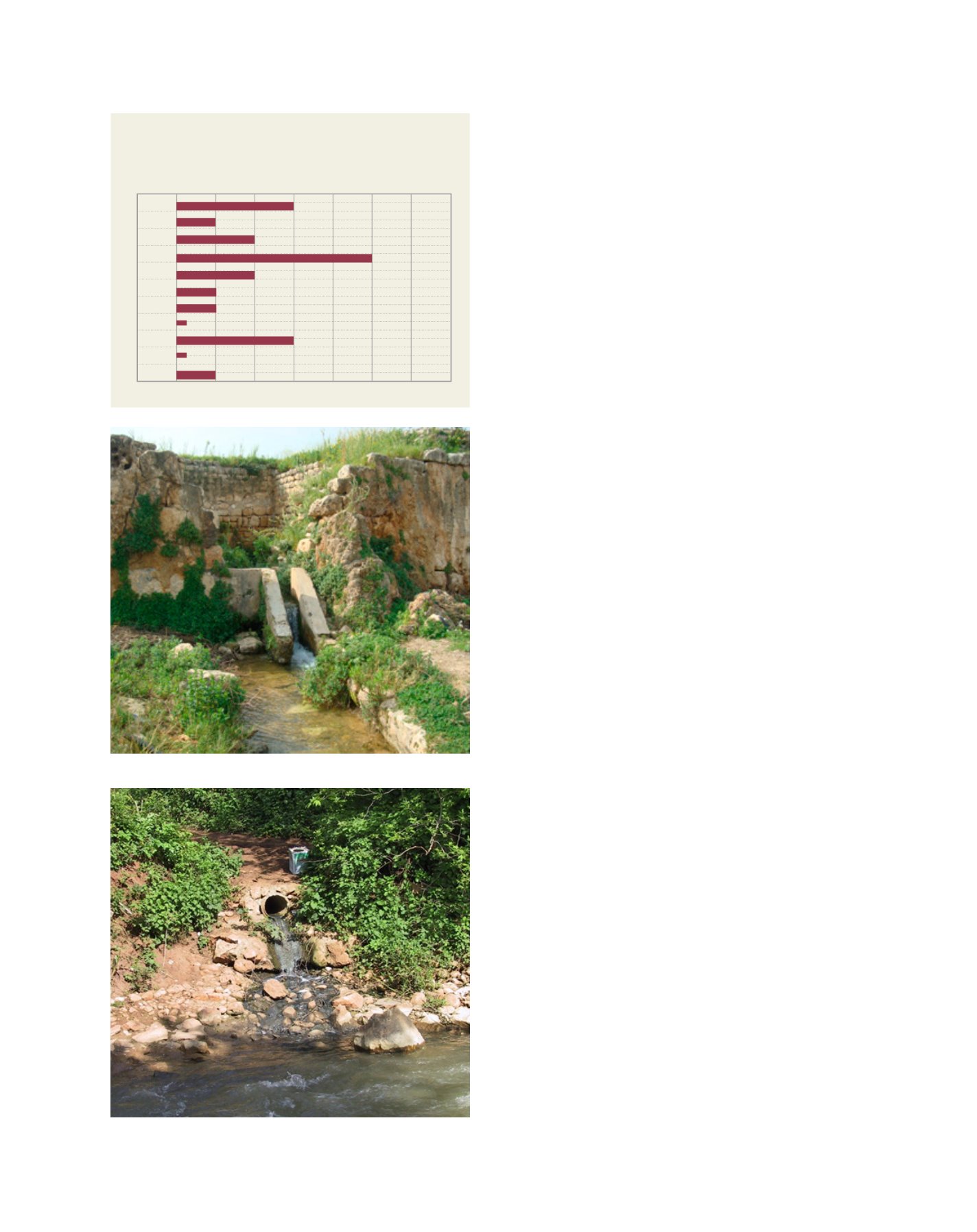

[
] 123
access
to
water
and
sanitation
for
all
• Facilitating capacity building for stakeholders on crucial
issues and problems with water and sanitation monitoring
• Establishing a platform for data sharing and updating
news on SDG 6. This can be built as a communication tool
linking members of the SDG 6-CL and other interested
parties, including decision makers
• Linking ideas, opinions and insights between high- and
low-level stakeholders
• Proposing and implementing new monitoring approaches
with reference to those applied successfully worldwide
• Adopting SDG 6-CL as the main contact and implement-
ing entity for SDG 6 in Lebanon, which can later assume
the responsibilities of an SDG 6 National Committee.
The first step by the SDG 6-CL was to conduct a survey on
the priorities of the 11 indicators listed in the SDG 6 goal.
This helped to select the most significant indicators to begin
dealing with in Lebanon. It became clear to the SDG 6-CL
that the priorities are governed by the water sector. Thus,
indicators 6.1.1, 6.3.2 and 6.6.1 are the most significant. The
priorities were therefore given as follows:
• Indicator 6.3.2: Proportion of bodies of water with good
ambient water quality, where 5 priority selections were
matched
• Indicator 6.1.1 and 6.6.1: Proportion of the population
using safely managed drinking water services; and change
in the extent of water-related ecosystems over time, where
3 priority selections were matched for each.
The insights of the stakeholders on water supply and sanita-
tion were summarised as follows:
• Water consumers, farmers and academics are pessimistic
about the water and sanitation sectors
• Water and sanitation sector employees stated that solu-
tions should be rapidly taken
• There are many promises of improvement from high-level
stakeholders regarding water and sanitation
• It is obvious that capacity building by various stakehold-
ers is crucial.
The following points can be concluded:
• Current water supply and sanitation services are unac-
ceptable
• Mismanagement is the main reason for water problems
and sanitation in Lebanon
• Institutional coordination, data exchange and sharing are
still unsatisfactory
• Water and sanitation monitoring systems in Lebanon are
unacceptable and sometimes bad
• SDG 6-CL has declared that the engagement of Lebanon
in SDG 6 is of great benefit, and that collaborative projects
run with financial support would be a helpful tool if intro-
duced by UN Water
• Services for water-related ecosystem are poor, and the
water is contaminated
• Water efficiency is badly defined and sometimes unsatis-
factory, and water systems are obviously stressed
• There is a necessity to adopt all SDG 6 indicators, with
some of them modified according to the country’s needs.
A neglected spring
Sewage outfall into river water, a common feature in Lebanon
Image: CNRS-L
Image: CNRS-L
Priority of SDG 6 indicators for Lebanon as evidenced
by the SDG 6-CL members
Source: CNRS-L, 2018
Frequency of selection by SDG-6-CL members
SDG-6- indicators
6.1.1
6.2.1
6.3.1
6.3.2
6.4.1
6.4.2
6.5.1
6.5.2
6.6.1
6.a.1
6.b.1
1
2
3
4
5
6
















